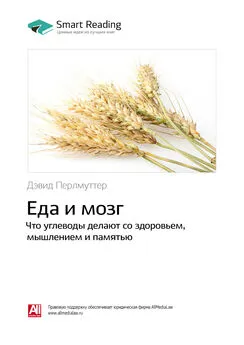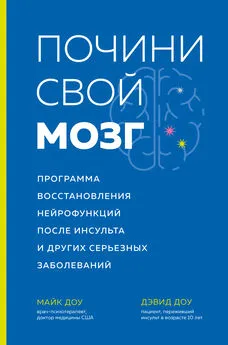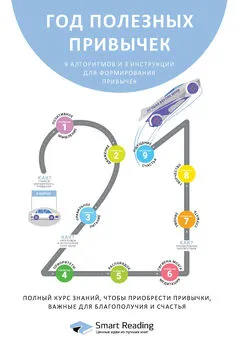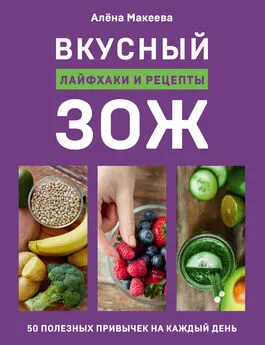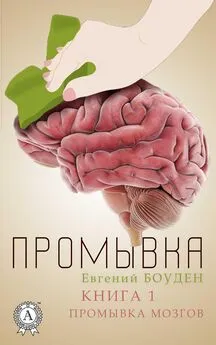Дэвид Перлмуттер - Промывка мозга. Программа для ясного мышления, укрепления отношений с людьми и развития полезных привычек
- Название:Промывка мозга. Программа для ясного мышления, укрепления отношений с людьми и развития полезных привычек
- Автор:
- Жанр:
- Издательство:Литагент МИФ без подписки
- Год:2020
- Город:Москва
- ISBN:978-5-00169-168-6
- Рейтинг:
- Избранное:Добавить в избранное
-
Отзывы:
-
Ваша оценка:
Дэвид Перлмуттер - Промывка мозга. Программа для ясного мышления, укрепления отношений с людьми и развития полезных привычек краткое содержание
На русском языке публикуется впервые.
Промывка мозга. Программа для ясного мышления, укрепления отношений с людьми и развития полезных привычек - читать онлайн бесплатно ознакомительный отрывок
Интервал:
Закладка:
281
P. James et al. “Outdoor Light at Night and Breast Cancer Incidence in the Nurses’ Health Study II,” Environ. Health Perspect. 125, № 8 (August 2017): 087010.
282
T. A. Bedrosian and R. J. Nelson. “Timing of Light Exposure Affects Mood and Brain Circuits,” Transl. Psychiatry 7, № 1 (January 2017): e1017.
283
Common Sense Media. “The Common Sense Census: Media Use by Kids Age Zero to Eight 2017”. https://www.commonsensemedia.org/research/the-common-sense-census-media-use-by-kids-age-zero-to-eight-2017.
284
The National Sleep Foundation’s Sleep in America poll. https://www.sleepfoundation.org/sites/default/files/inline-files/Highlights_facts_06.pdf.
285
A. Shechter et al. “Blocking Nocturnal Blue Light for Insomnia: A Randomized Controlled Trial,” J. Psychiatr. Res. 96 (January 2018): 196–202.
286
F. H. Rångtell et al. “Two Hours of Evening Reading on a Self-Luminous Tablet vs. Reading a Physical Book Does Not Alter Sleep After Daytime Bright Light Exposure,” Sleep Med. 23 (July 2016): 111–118.
287
D. A. Raichlen and A. D. Gordon. “Relationship Between Exercise Capacity and Brain Size in Mammals,” PLoS One 6, № 6 (June 2011): e20601; см. также D. A. Raichlen and J. D. Polk. “Linking Brains and Brawn: Exercise and the Evolution of Human Neurobiology,” Proc. Biol. Sci. 280, № 1750 (January 2013): 201222550.
288
M. Moriya, C. Aoki, and K. Sakatani. “Effects of Physical Exercise on Working Memory and Prefrontal Cortex Function in Post-Stroke Patients,” Adv. Exp. Med. Biol. 923 (2016): 203–208; см. также T. Tsujii, K. Komatsu, and K. Sakatani. “Acute Effects of Physical Exercise on Prefrontal Cortex Activity in Older Adults: A Functional Near-Infrared Spectroscopy Study,” Adv. Exp. Med. Biol. 765 (2013): 293–298.
289
S. Dimitrov, E. Hulteng, and S. Hong. “Inflammation and Exercise: Inhibition of Monocytic Intracellular TNF Production by Acute Exercise via β2-Adrenergic Activation,” Brain Behav. Immun. 61 (March 2016): 60–68.
290
D. Aune et al. “Physical Activity and the Risk of Type 2 Diabetes: A Systematic Review and Dose-Response Meta-Analysis,” Eur. J. Epidemiol. 30, № 7 (July 2015): 529–542.
291
E. E. Hill et al. “Exercise and Circulating Cortisol Levels: The Intensity Threshold Effect,” J. Endocrinol. Invest. 31, № 7 (July 2008): 587–591.
292
D. E. Lieberman. “Is Exercise Really Medicine? An Evolutionary Perspective,” Curr. Sports Med. Rep. 14, № 4 (July-August 2015): 313–19; см. также D. E. Lieberman. The Story of the Human Body: Evolution, Health, and Disease (New York: Pantheon, 2013).
293
D. Berrigan et al. “Physical Activity in the United States Measured by Accelerometer,” Med. Sci. Sports Exerc. 40, № 1 (January 2008): 181–188.
294
Frank W. Marlowe. The Hadza: Hunter-Gatherers of Tanzania, Origins of Human Behavior and Culture 3 (Berkeley: University of California Press, 2010).
295
A. Biswas et al. “Sedentary Time and Its Association with Risk for Disease Incidence, Mortality, and Hospitalization in Adults: A Systematic Review and Meta-Analysis,” Ann. Intern. Med. 162, № 2 (January 2015): 123–132.
296
S. Beddhu et al., “Light-Intensity Physical Activities and Mortality in the United States General Population and CKD Subpopulation,” Clin. J. Am. Soc. Nephrol. 10, no. 7 (July 2015): 1145–53.
297
См. сайт Национального института рака, посвященный взаимосвязям между физической активностью и раком: www.cancer.gov/about-cancer/causes-prevention/risk/obesity/physical-activity-fact-sheet.
298
S. Colcombe and A. F. Kramer. “Fitness Effects on the Cognitive Function of Older Adults: A Meta-Analytic Study,” Psychol. Sci. 14, № 2 (March 2003): 125–130.
299
C. L. Davis et al. “Exercise Improves Executive Function and Achievement and Alters Brain Activation in Overweight Children: A Randomized, Controlled Trial,” Health Psychol. 30, № 1 (January 2011): 91–98.
300
D. Moreau, I. J. Kirk, and K. E. Waldie. “High-Intensity Training Enhances Executive Function in Children in a Randomized, Placebo-Controlled Trial,” Elife 6 (August 2017).
301
C. E. Hugenschmidt et al. “Effects of Aerobic Exercise on Functional Connectivity of Prefrontal Cortex in MCI: Results of a Randomized Controlled Trial,” Alzheimers Dement. 13, № 7 (July 2017): 569–570.
302
J. A. Blumenthal et al. “Lifestyle and Neurocognition in Older Adults with Cognitive Impairments,” Neurology 92, № 3 (2019): e212-e223.
303
P. Gellert et al. “Physical Activity Intervention in Older Adults: Does a Participating Partner Make a Difference?” Eur. J. Ageing 8, № 3 (September 2011): 211.
304
A. Kassavou, A. Turner, and D. P. French “Do Interventions to Promote Walking in Groups Increase Physical Activity? A Meta-Analysis,” Int. J. Behav. Nutr. Phys. Act. 10 (February 2013) 18.
305
L. Chaddock-Heyman et al. “Aerobic Fitness Is Associated with Greater White Matter Integrity in Children,” Front. Hum. Neurosci. 8 (August 2014): 584.
306
S. M. Hayes et al. “Cardiorespiratory Fitness Is Associated with White Matter Integrity in Aging,” Ann. Clin. Trans. Neurol. 2, № 6 (June 2015): 688–698.
307
C. J. Vesperman et al. “Cardiorespiratory Fitness Attenuates Age-Associated Aggregation of White Matter Hyperintensities in an At-Risk Cohort,” Alzheimers Res. Ther. 10, № 1 (September 2018): 97.
308
S. Müller et al. “Relationship Between Physical Activity, Cognition, and Alzheimer Pathology in Autosomal Dominant Alzheimer’s Disease,” Alzheimers Dement. 14, № 11 (November 2018): 1427–1437.
309
Helena Hörder et al. “Midlife Cardiovascular Fitness and Dementia,” Neurology 90, № 15 (April 2018): e1298-e1305.
310
G. M. Cooney et al. “Exercise for Depression,” Cochrane Database Syst. Rev. 9 (September 2013): CD004366.
311
D. Catalan-Matamoros et al. “Exercise Improves Depressive Symptoms in Older Adults: An Umbrella Review of Systematic Reviews and Meta-Analyses,” Psychiatry Res. 244 (October 2016): 202–209.
312
S. B. Harvey et al. “Exercise and the Prevention of Depression: Results of the HUNT Cohort Study,” Am. J. Psychiatry 175, № 1 (January 2017): 28–36.
313
K. W. Choi et al. “Assessment of Bidirectional Relationships Between Physical Activity and Depression Among Adults: A 2-Sample Mendelian Randomization Study,” JAMA Psychiatry 76, № 4 (January 2019): 399–408.
314
S. Butscheidt et al. “Impact of Vitamin D in Sports: Does Vitamin D Insufficiency Compromise Athletic Performance?” Sportverletz Sportschaden 31, № 1 (January 2017): 37–44.
315
S. Charron and E. Koechlin. “Divided Representation of Concurrent Goals in the Human Frontal Lobes,” Science 328, № 5976 (April 2010): 360–363.
316
“Use of Yoga and Meditation Becoming More Popular in U.S.,” press release, November 8, 2018. https://www.cdc.gov/nchs/pressroom/nchs_press_releases/2018/201811_Yoga_Meditation.htm.
317
P. H. Ponte Márquez et al. “Benefits of Mindfulness Meditation in Reducing Blood Pressure and Stress in Patients with Arterial Hypertension,” J. Hum. Hypertens. 33, № 3 (March 2019): 237–247.
318
L. Hilton et al. “Mindfulness Meditation for Chronic Pain: Systematic Review and Meta-Analysis,” Ann. Behav. Med. 51, № 2 (April 2017): 199–213.
319
D. S. Black and G. M. Slavich. “Mindfulness Meditation and the Immune System: A Systematic Review of Randomized Controlled Trials,” Ann. N. Y. Acad. Sci.1373, № 1 (June 2016): 13–24.
320
M. C. Pascoe et al. “Mindfulness Mediates the Physiological Markers of Stress: Systematic Review and Meta-Analysis,” J. Psychiatr. Res. 95 (December 2017): 156–178.
321
T. Gard, B. K. Hölzel, and S. W. Lazar. “The Potential Effects of Meditation on Age-Related Cognitive Decline: A Systematic Review,” Ann. N. Y. Acad. Sci. 1307 (January 2014): 89–103.
322
J. Ong and D. Sholtes. “A Mindfulness-Based Approach to the Treatment of Insomnia,” J. Clin. Psychol. 66, № 11 (November 2010): 1175–1184.
323
D. C. Johnson et al. “Modifying Resilience Mechanisms in At-Risk Individuals: A Controlled Study of Mindfulness Training in Marines Preparing for Deployment,” Am. J. Psychiatry 171, № 8 (August 2014): 844–853.
324
M. Goyal et al. “Meditation Programs for Psychological Stress and Well-Being: A Systematic Review and Meta-Analysis,” JAMA Intern. Med. 174, № 3 (March 2014): 357–368.
325
D. W. Orme-Johnson and V. A. Barnes. “Effects of the Transcendental Meditation Technique on Trait Anxiety: A Meta-Analysis of Randomized Controlled Trials,” J. Altern. Complement. Med. 20, № 5 (May 2014): 330–341.
326
B. K. Hölzel et al. “Mindfulness Practice Leads to Increases in Regional Brain Gray Matter Density,” Psychiatry Res. 191, № 1 (January 2011): 36–43.
327
S. W. Lazar et al. “Meditation Experience Is Associated with Increased Cortical Thickness,” Neuroreport 16, № 17 (November 2005): 1893–1897.
328
Y-Y. Tang et al. “Short-Term Meditation Induces White Matter Changes in the Anterior Cingulate,” Proc. Natl. Acad. Sci. USA 107, № 35 (2010): 15649–15652.
329
J. A. Brewer et al. “Meditation Experience Is Associated with Differences in Default Mode Network Activity and Connectivity,” Proc. Natl. Acad. Sci. USA 108, № 50 (December 2011): 20254–20259.
330
Y-Y. Tang et al. “Short-Term Meditation Training Improves Attention and Self-Regulation,” Proc. Natl. Acad. Sci. USA 104, № 43 (October 2007): 17152–17156.
331
Y-Y. Tang, B. K. Hölzel, and M. I. Posner. “The Neuroscience of Mindfulness Meditation,” Nat. Rev. Neurosci. 16, № 4 (April 2015): 213–225.
332
S. L. Valk et al. “Structural Plasticity of the Social Brain: Differential Change After Socio-Affective and Cognitive Mental Training,” Sci. Adv. 3, № 10 (October 2017): e1700489; см. также R. A. Gotink et al., “8-Week Mindfulness Based Stress Reduction Induces Brain Changes Similar to Traditional Long-Term Meditation Practice – A Systematic Review,” Brain Cogn. 108 (October 2016): 32–41.
Читать дальшеИнтервал:
Закладка:
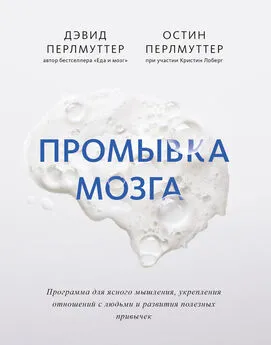
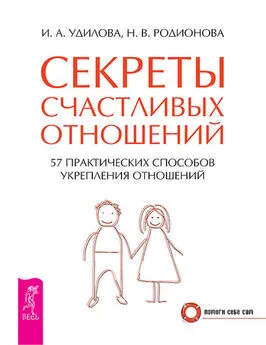
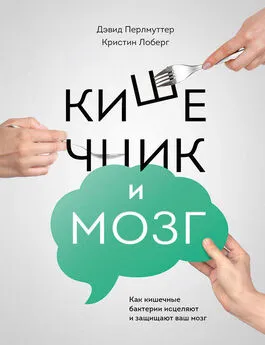
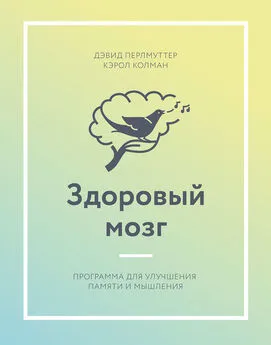

![Дэвид Доу - Почини свой мозг. Программа восстановления нейрофункций после инсульта и других серьезных заболеваний [litres]](/books/1143582/devid-dou-pochini-svoj-mozg-programma-vosstanovlen.webp)
